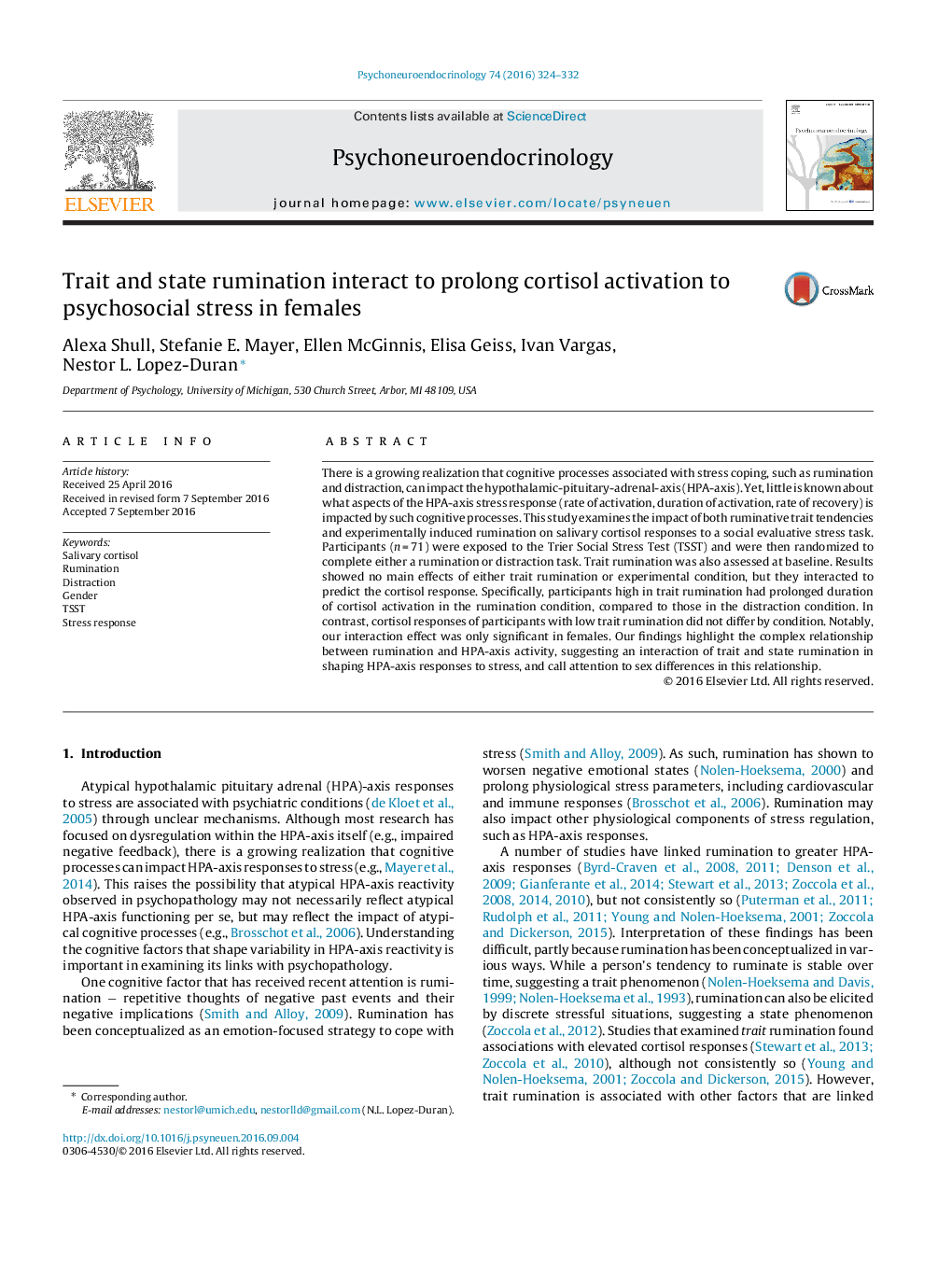| Article ID | Journal | Published Year | Pages | File Type |
|---|---|---|---|---|
| 4934661 | Psychoneuroendocrinology | 2016 | 9 Pages |
Abstract
There is a growing realization that cognitive processes associated with stress coping, such as rumination and distraction, can impact the hypothalamic-pituitary-adrenal-axis (HPA-axis). Yet, little is known about what aspects of the HPA-axis stress response (rate of activation, duration of activation, rate of recovery) is impacted by such cognitive processes. This study examines the impact of both ruminative trait tendencies and experimentally induced rumination on salivary cortisol responses to a social evaluative stress task. Participants (n = 71) were exposed to the Trier Social Stress Test (TSST) and were then randomized to complete either a rumination or distraction task. Trait rumination was also assessed at baseline. Results showed no main effects of either trait rumination or experimental condition, but they interacted to predict the cortisol response. Specifically, participants high in trait rumination had prolonged duration of cortisol activation in the rumination condition, compared to those in the distraction condition. In contrast, cortisol responses of participants with low trait rumination did not differ by condition. Notably, our interaction effect was only significant in females. Our findings highlight the complex relationship between rumination and HPA-axis activity, suggesting an interaction of trait and state rumination in shaping HPA-axis responses to stress, and call attention to sex differences in this relationship.
Related Topics
Life Sciences
Biochemistry, Genetics and Molecular Biology
Endocrinology
Authors
Alexa Shull, Stefanie E. Mayer, Ellen McGinnis, Elisa Geiss, Ivan Vargas, Nestor L. Lopez-Duran,
